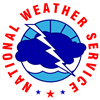Overview
|
A strong cold front moved through the region bringing a quick round of snow. Behind the cold front, strong wind gusts of 40 to 55 mph occurred and, combined with the colder temperatures, produced sub-zero wind chill values for many locations. The combination of snow, wind, and a flash freeze led to some power outages and travel impacts. |
 Image courtesy WICHway |
Snow/Ice
Here is a look at how much snow fell across parts of central, south-central, and southeast Kansas January 18-19, 2019. Notice the swath of slightly higher amounts that fell along the Kansas Turnpike. An area of lift was focused there and was responsible for the higher amounts (you can check out the "Environment" section for a more detailed explanation of this).


Photos & Video
|
|
|
|
|
|
Radar
Below is a radar image of a band of heavier precipitation that developed across eastern Kansas during the evening of January 18th.
 |
| 7:45 pm, January 18th Radar Image |
Environment
An area of low pressure developed over the High Plains during the morning of January 18, then moved southeast across Oklahoma that evening. As the low passed south of Kansas, an area of low level frontogenesis (ie. an area of enhanced lift along a frontal zone/temperature gradient) developed across eastern Kansas. This combined with large-scale forcing for ascent, associated with a quick-moving upper level shortwave, producing an area of enhanced lift from south-central Kansas up through northeast Kansas. Within that zone, precipitation rates were higher than surrounding areas. This produced locally higher rainfall and snowfall amounts.
 |
 |
| Figure 1: Low-level frontogenesis (note the area over eastern Kansas) | Figure 2: Radar imagery at 7:45 pm, January 18, 2019 showing a band of heavier precipitation associated with the area of enhanced lift seen in Figure 1 |
 |
Media use of NWS Web News Stories is encouraged! Please acknowledge the NWS as the source of any news information accessed from this site. |
 |